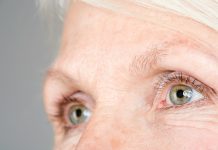
A new study has brought to light a concerning connection between radon exposure and the risk of stroke. It expands our understanding of the dangers posed by this invisible and odorless gas.
While radon is widely known as the second leading cause of lung cancer, this research, published in Neurology, suggests that its health implications may be broader than previously understood.
The study focused on middle-aged to older women, showing that those exposed to high and even moderate levels of radon faced a greater risk of stroke compared to those exposed to lower levels.
The research was Conducted by Eric A. Whitsel, MD, MPH, of the University of North Carolina in Chapel Hill.
Radon, a naturally occurring radioactive gas, is produced from the breakdown of metals like uranium or radium in rocks and soil.
It can enter homes through various means, such as cracks in basement walls and floors, construction joints, or gaps around pipes. As an indoor air pollutant, radon concentration in homes can only be detected through specific testing.
The study comprised 158,910 female participants with an average age of 63, none of whom had a history of stroke at the beginning of the research.
Over an average follow-up period of 13 years, there were 6,979 strokes recorded among the participants.
To estimate radon exposure, the researchers linked the participants’ home addresses to radon concentration data provided by the U.S. Geological Survey and the U.S. Environmental Protection Agency (EPA).
The EPA’s current recommendation is that average indoor radon levels should not exceed four picocuries per liter (pCi/L), advising the installation of a radon mitigation system in homes exceeding this threshold.
The participants were categorized into three groups based on their exposure levels: high (more than four pCi/L), middle (between two and four pCi/L), and low (less than two pCi/L).
Interestingly, the research found a 14% increased risk of stroke in the highest exposure group and a 6% increased risk in the middle group, even after adjusting for various stroke risk factors like smoking, diabetes, and high blood pressure.
Dr. Whitsel highlighted a critical observation that the increased risk of stroke was evident even in participants exposed to radon levels up to two pCi/L below the EPA’s recommended action level.
While more studies are needed to confirm these findings, this research potentially opens a new avenue in public health initiatives aimed at mitigating stroke risks.
If you care about stroke, please read studies that diets high in flavonoids could help reduce stroke risk, and MIND diet could slow down cognitive decline after stroke.
For more information about health, please see recent studies about antioxidants that could help reduce the risk of dementia, and tea and coffee may help lower your risk of stroke, dementia.
The research findings can be found in Neurology.
Copyright © 2024 Knowridge Science Report. All rights reserved.



